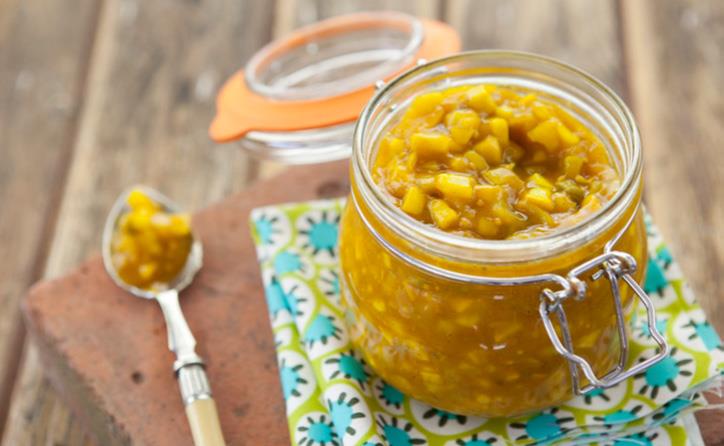Pickles generally fall into two categories, namely clear pickles, and thick, saucy pickles such as piccalilli. Pickled vegetables are preserved by the addition of acid, salt, and sugar.
A wide variety of sweet pickles are available, varying with the vegetables used, the degree to which the vegetables are softened by cooking, and the type of sauce used.
The texture of the vegetables thus varies from crisp to soft. Common vegetables include cauliflower, carrots, celery, tomatoes, cucumber, and onion. Spices include salt, turmeric, mustard, ginger, garlic, and red chillies. A wide range of recipes is available, reflecting different approaches and ideas, different consumer preferences, different preparation methods and equipment, and economic considerations. This is therefore a very basic description of the preparation and preservation of a thick, saucy pickle.
The manufacturer or would-be manufacturer can develop his own unique product with the principles discussed in this report. The vegetables and the sauce are prepared separately and combined just before filling the jars. The vegetables may be cooked slightly in the sauce. The ratio of sauce to vegetables varies between 4:6 and 6:4. A refractometric solids content 35% and an acetic acid content of 2,4% provide both a satisfactory sugar/acid flavour combination and a safe preservation index.
Preparation of vegetables for piccalilli
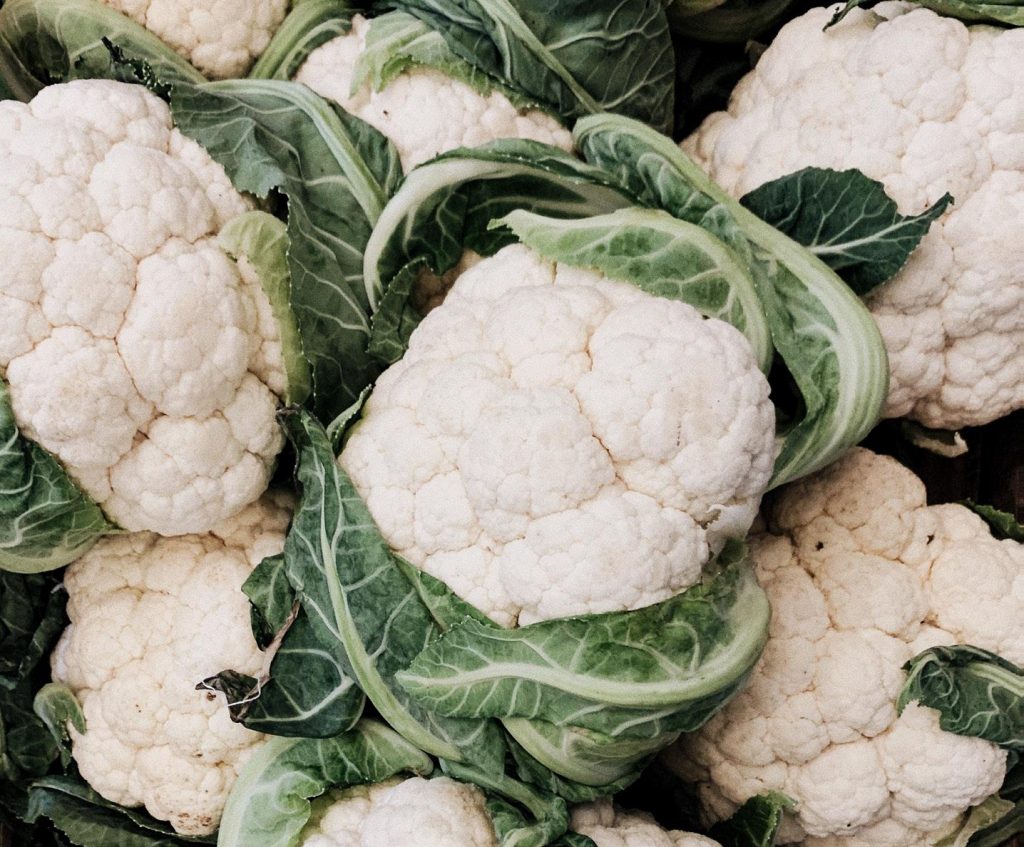
The selected vegetables should be inspected, sorted, and trimmed to ensure that only sound vegetables are used. The vegetables should be thoroughly washed to remove any soil, dirt, and other contaminants. Those vegetables in need of peeling, such as carrots, are peeled. The vegetables are then chopped or sliced into uniformly sized pieces to ensure even acid uptake during storage. The vegetables are mixed and placed in a brine solution containing about 10% salt to soak overnight. The brine may be slightly acidified with lactic acid (<0,5%).
Preparation of the sauce for piccalilli
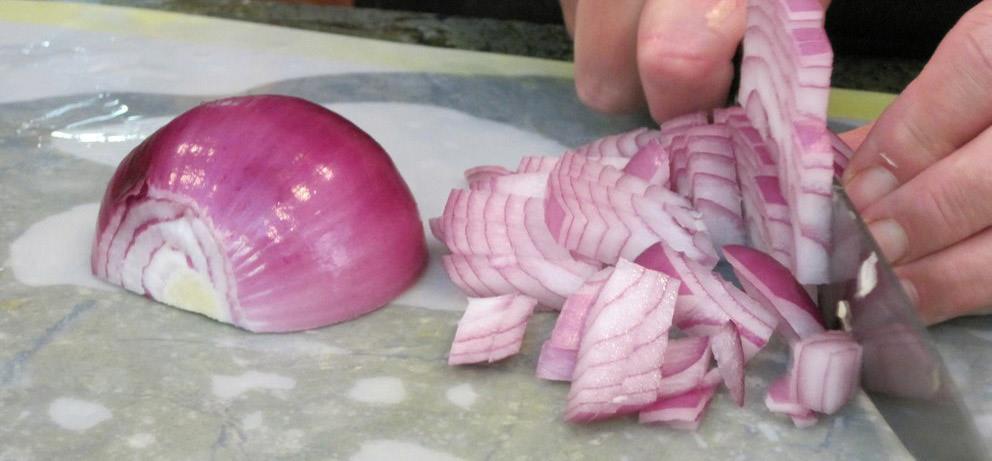
The sauce is prepared by combining the selected spices along with vinegar and sugar in a large open batch heater. The mixture is slowly heated and brought to boil to dissolve the sugar and extract the flavour from the spices.
Cooking of vegetables in sauce for piccalilli
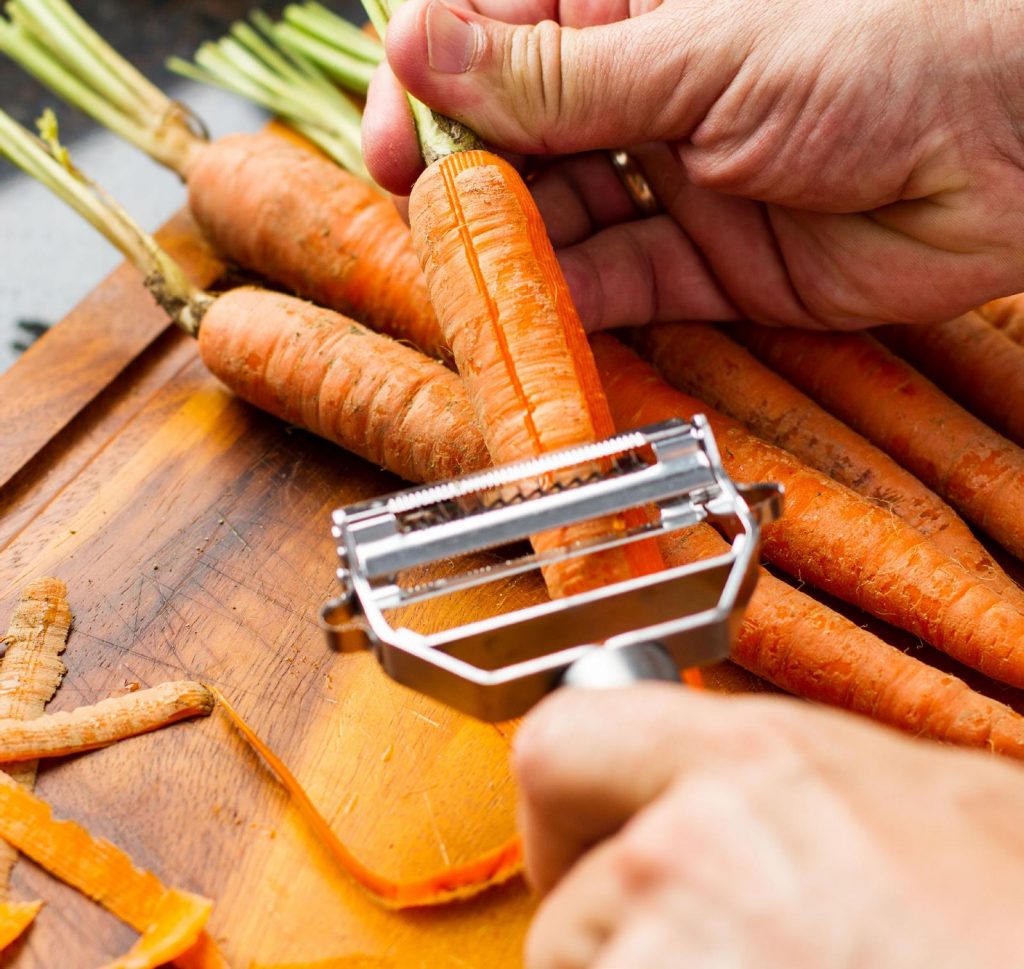
The brined vegetables are drained and rinsed to remove the excess salt from the surface. The vegetables are then placed in the sauce and allowed to cook on a low heat (simmer) until the vegetables are just tender.
Thickening of piccalilli sauce
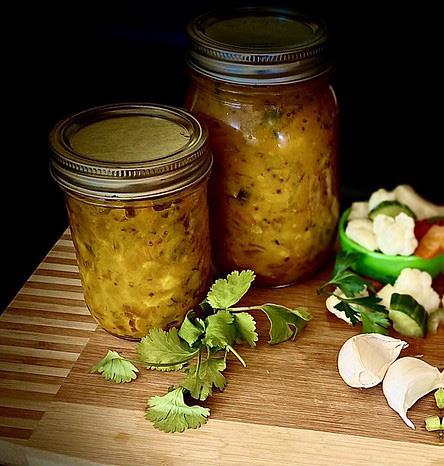
The vegetable and sauce mixture is thickened by the addition of thickening agent. Corn flour is commonly used and mixed with a little vinegar prior to addition to the sauce to prevent the formation of lumps. The mixture is further heated under constant stirring until the desired consistency is reached.
Bottling of piccalilli
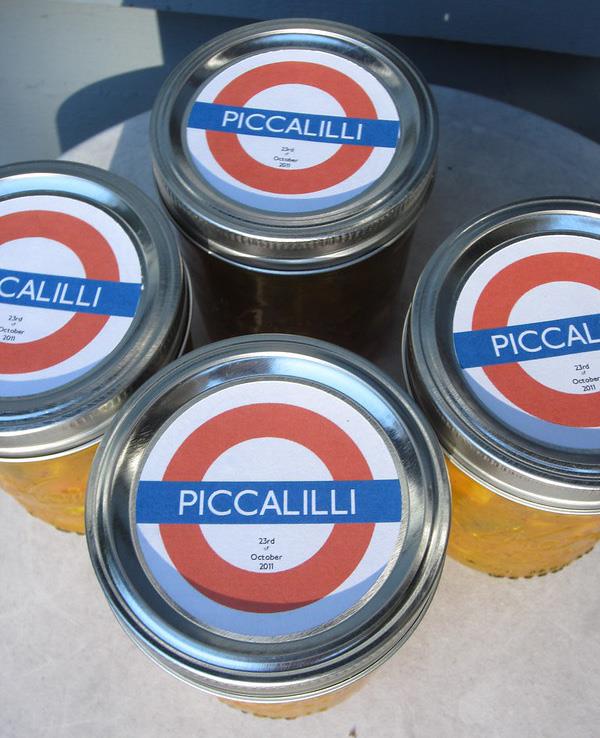
The hot, thickened piccalilli is poured into suitable, wide-mouthed glass jars that have been properly cleaned. The containers are hermetically sealed with self-venting, acid resistant lacquered metal closures capable of forming a vacuum seal. A small headspace is left at the top of the jar. The final acid level of the product should be below pH 4,5 and thus only requires pasteurisation for long term preservation. Hot filling (at a temperature above 85 °C) of the piccalilli reduces the required heat dosage of pasteurisation.
Pasteurisation of piccalilli
Pasteurisation entails the controlled and limited heating of the pickles in sealed containers that are capable of forming a headspace vacuum upon cooling. It is impossible to give specific time and temperature requirements in a general report such as this, since sufficient pasteurisation depends on the size and dimensions of the container, the starting temperature, the type of equipment used, the type of product and pH. However, it is essential to institute the most rapid and efficient heating (and cooling) method possible to ensure that the product is not overheated, resulting in softening of the vegetables and a generally poor quality product.
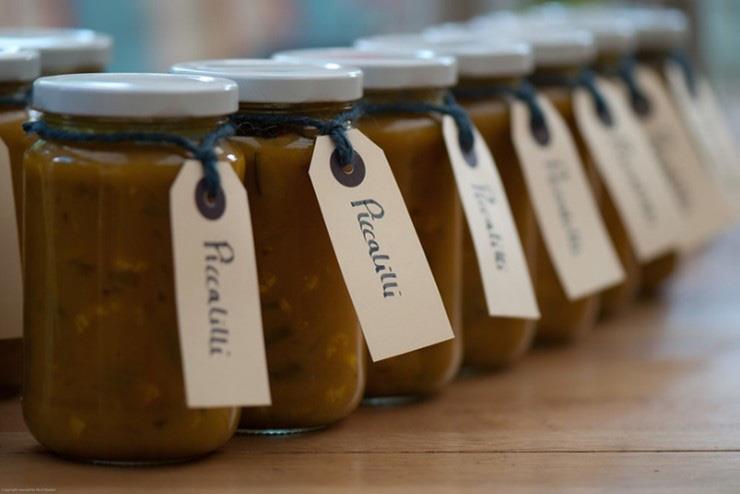
The hot piccalilli is filled into cleaned, preheated jars at around 85 to 93 °C and sealed hermetically. The containers are held at a temperature of above 85 °C to ensure that the slowest point of heating of the content is held at 85 °C for 3 to 5 minutes. This ensures pasteurisation of all interior surfaces. This can be accomplished by passing the containers through a hot water tank or steam cabinet on a batch or continuous basis.
Cooling and drying
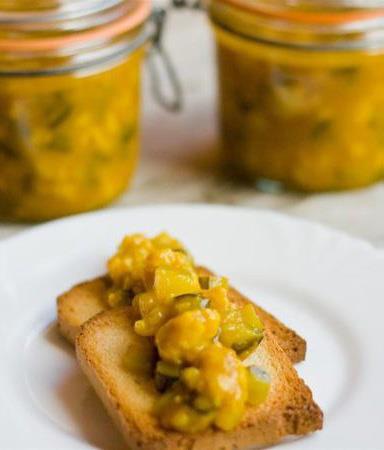
Rapid cooling should follow immediately after pasteurisation. Cooling prevents overheating that would result in loss of sensory quality. The jars are cooled to below 50 °C with cold water. The first stage of cooling takes place in the cabinet/retort by replacing the hot water with progressively cooler water. Further cooling takes place once the containers have been removed. Alternatively, the containers can be cooled by passing them through misting tunnels. Cooling of glass jars should be gradual to prevent thermal shock that would result in cracking of the jars. The containers are allowed to dry naturally or be blowdried with hot air blowers prior to labelling.
Published with acknowledgement to the ARC Agricultural Engineering for the use of their manuals. Visit www.arc.agric.za for more information.

